
With many thanks to my old American friend D. M. for her kind revision of the original manuscript.

日本語版は、こちらをクリック
------------------------------------------------
Contents
Introduction
Section 1. Karl’s encounter with baumkuchen
Section 2. The path from Tsingtao to Japan during World War I
Section 3. The first exhibition of baumkuchen to the Japanese public
Section 4. A promising start in Japan
Section 5. Transitory success in Yokohama and a setback by the Great Kanto Earthquake
--------------------------------------------------
To see the following sections click here
Section 6. Comeback in Kobe
Section 7. The seemingly irreversible blows of World War II
Epilogue
-------------------------------------------------------------
Introduction
I was impressed by a recent TV program presenting the turbulent life story of a German couple, Karl and Elise Juchheim. They were cofounders of the company “Juchheim” which is one of the most famous confectionery companies in Japan. The story’s highlights include the tale of Karl’s imprisonment in Japanese camp during World War I, his first exhibition of baumkuchen to the Japanese public in a building that later became Hiroshima Atomic Bomb Dome, his losses during the Great Kanto Earthquake in Yokohama and the massive air raids on Kobe during World War II. Here I recount a story that serves as a fitting background to the activities of a citizens' group that is gathering paper cranes to use in an appeal for peace and the abolition of nuclear weapons.
Section 1. Karl’s encounter with baumkuchen
Karl was born on December 25, 1886 in a small town on the Rhine, the tenth child of a brewer; he inherited a streak of stubbornness from his father. Karl eventually decided to be a confectioner, and was apprenticed to a confectioner in 1901 at 15 years of age. His birth date had a significant influence on his life as a confectioner; Christmas celebrations began four weeks ahead of Christmas in Germany, and he felt as if he was celebrating his own birthday. Karl was especially fascinated with baking baumkuchen.
Baumkuchen was invented about 250 years ago; in Germany, it is known as the "King of Cakes (Der König der Kuchen).” Traditional baumkuchen is made from egg, sugar, butter, wheat flour and water, without any additives. A thin brown ring of cake is formed by baking a thin layer of batter on a rotating pole; once the first layer is golden-brown, ten to twenty successive layers of the cake are formed by coating the previous layer with fresh batter to form the multiple rings of baumkuchen. A confectioner who can bake baumkuchen is considered a Meister (master) of the confectioner’s art. Because of their hot working environment, baumkuchen confectioners are not expected to live long, but Karl determined to spend his life in baking baumkuchen.
Karl completed his apprenticeship in 1908 and was soon recruited by a trading merchant who was going to open a café restaurant in Tsingtao, at that time a German territory leased from China. There he gained a fine reputation for his baumkuchen as a true German confectionery, and the merchant turned over ownership of the café to Karl within a year.
Section 2. The path from Tsingtao to Japan during World War I
Karl met Elise, his future wife, during a visit to Germany and fell in love instantaneously. Karl and Elise were married in Tsingtao in 1914, the year World War I broke out in Europe. Japanese troops allied with Great Britain invaded Tsingtao, and even civilians like Karl were recruited for military service. However, the German troops were far outnumbered and eventually surrendered. Karl was captured by Japanese troops and sent to a POW camp in Japan along with other German soldiers. Elise, who was then pregnant, remained in Tsingtao.
Karl was first housed in a camp in Osaka and later moved to another camp in Hiroshima. The German soldiers expected to be liberated quickly, after an early Germany victory, but the war lasted until the Germans surrendered and signed the armistice in November, 1918. The release of German POWs came only somewhat later.
Section 3. The first exhibition of baumkuchen to the Japanese public
At the end of the war, an exhibition of the products of artwork and crafts by German soldiers was planned for Hiroshima. Organizers of this event hoped that the exquisite work of German soldiers would help the development of Hiroshima. Karl was encouraged to present baumkuchen by his fellow German soldiers. Despite the four years he spent in prison without baking, Karl regained the essential know-how as soon as he started baking again.
The exhibition was held on March 4, 1919 in Hiroshima Prefecture Industrial Promotion Hall. Other German soldiers presented flower vases, paintings, fruit wines, etc. Karl’s traditional baumkuchen drew a great deal of attention and were soon sold out.
A traditional baumkuchen does not look like a round log as most commercially produced versions do. As shown in the figure below, It has protrusions called horns, the result of the use of additive-free dough and fully manual baking operations. Karl followed the traditional procedure throughout his life. He used to say “Hornless baumkuchen looks like a whale. Numerous high protrusions are proof of true work of Meister.”

By a twist of fate, the building used for the exhibition was severely damaged by the atomic bombing of Hiroshima on August 6, 1945. The ruin of the building was left standing as a memorial called the Atomic Bomb Dome, Genbaku Dome in Japanese, which in 1996 was designated as a UNESCO World Heritage site, the Hiroshima Peace Memorial. Computer graphic images of the building as it was before the bombing were recreated recently by Japanese and American engineers.
Section 4. A promising start in Japan
Karl's baumkuchen quickly became renowned, and having regained his standing as a Meister, Karl decided to remain in Japan as a confectioner. In 1919, he was appointed at an enormously high salary as head of confectionery production at “Café Europe,” a newly opened upscale restaurant in Ginza, Tokyo. This allowed him to bring Elise and their son Karlfranz from Tsingtao to live with him in Japan.
Section 5. Transitory success in Yokohama and a setback by the Great Kanto Earthquake
When his contract with Café Europe ended in February 1922, Karl bought an unpopular Russian restaurant in Yamashita-cho, Yokohama, and renovated it as a café-restaurant “E. Juchheim,” opening in March, 1922. Yokohama was a major international harbor where foreign luxury passenger ships docked. Hotels and restaurants designed for foreign visitors created a westernized atmosphere near the port, and Karl’s baumkuchen were very popular there. In addition, inexpensive and delicious German-style meals served under Elise’s direction were a success. Karl’s business was progressing promisingly.

The Great Kanto Earthquake (magnitude 7.9) hit Yokohama at 32 sec past 11:58 a.m. on September 1, 1923. A large area including Yokohama was devastated with more than 1.9 million people affected. More than 140 thousand people were dead or missing, at least 20 thousand of them in Yokohama itself. Karl was trapped under the rubble of “E. Juchheim,” and his son, Karlfranz, disappeared during his attempt to find help to rescue his father.
A luxury passenger ship “Empress of Australia” canceled its scheduled noon departure and made accommodations for victims regardless of their nationalities. Another passenger ship heading to Japan from Canada and still another one harboring in the port of Shimizu proceeded to Yokohama to help in the rescue efforts.
Karl, with only a 5-yen bill in his pocket, was rescued by his Japanese apprentice and, together with Elise, was accommodated in one of the ships. Together with many other non-Japanese victims, Karl and Elise were brought to Kobe, another major international harbor of Japan. Their son Karlfranz was rescued by a French lady who was a regular customer of E. Juchheim, and brought to Kobe later. The many non-Japanese residents of Kobe opened their homes to accommodate the victims being brought from Yokohama. Fellowship feelings had been fostered between the non-Japanese residents of the two cities through various exchange programs.
To see Sections 6, 7 and Epilogue, click Part II
日本語版は、こちらをクリック
------------------------------------------------
Contents
Introduction
Section 1. Karl’s encounter with baumkuchen
Section 2. The path from Tsingtao to Japan during World War I
Section 3. The first exhibition of baumkuchen to the Japanese public
Section 4. A promising start in Japan
Section 5. Transitory success in Yokohama and a setback by the Great Kanto Earthquake
--------------------------------------------------
To see the following sections click here
Section 6. Comeback in Kobe
Section 7. The seemingly irreversible blows of World War II
Epilogue
-------------------------------------------------------------
Introduction
I was impressed by a recent TV program presenting the turbulent life story of a German couple, Karl and Elise Juchheim. They were cofounders of the company “Juchheim” which is one of the most famous confectionery companies in Japan. The story’s highlights include the tale of Karl’s imprisonment in Japanese camp during World War I, his first exhibition of baumkuchen to the Japanese public in a building that later became Hiroshima Atomic Bomb Dome, his losses during the Great Kanto Earthquake in Yokohama and the massive air raids on Kobe during World War II. Here I recount a story that serves as a fitting background to the activities of a citizens' group that is gathering paper cranes to use in an appeal for peace and the abolition of nuclear weapons.
Section 1. Karl’s encounter with baumkuchen
Karl was born on December 25, 1886 in a small town on the Rhine, the tenth child of a brewer; he inherited a streak of stubbornness from his father. Karl eventually decided to be a confectioner, and was apprenticed to a confectioner in 1901 at 15 years of age. His birth date had a significant influence on his life as a confectioner; Christmas celebrations began four weeks ahead of Christmas in Germany, and he felt as if he was celebrating his own birthday. Karl was especially fascinated with baking baumkuchen.
Baumkuchen was invented about 250 years ago; in Germany, it is known as the "King of Cakes (Der König der Kuchen).” Traditional baumkuchen is made from egg, sugar, butter, wheat flour and water, without any additives. A thin brown ring of cake is formed by baking a thin layer of batter on a rotating pole; once the first layer is golden-brown, ten to twenty successive layers of the cake are formed by coating the previous layer with fresh batter to form the multiple rings of baumkuchen. A confectioner who can bake baumkuchen is considered a Meister (master) of the confectioner’s art. Because of their hot working environment, baumkuchen confectioners are not expected to live long, but Karl determined to spend his life in baking baumkuchen.
Karl completed his apprenticeship in 1908 and was soon recruited by a trading merchant who was going to open a café restaurant in Tsingtao, at that time a German territory leased from China. There he gained a fine reputation for his baumkuchen as a true German confectionery, and the merchant turned over ownership of the café to Karl within a year.
Section 2. The path from Tsingtao to Japan during World War I
Karl met Elise, his future wife, during a visit to Germany and fell in love instantaneously. Karl and Elise were married in Tsingtao in 1914, the year World War I broke out in Europe. Japanese troops allied with Great Britain invaded Tsingtao, and even civilians like Karl were recruited for military service. However, the German troops were far outnumbered and eventually surrendered. Karl was captured by Japanese troops and sent to a POW camp in Japan along with other German soldiers. Elise, who was then pregnant, remained in Tsingtao.
Karl was first housed in a camp in Osaka and later moved to another camp in Hiroshima. The German soldiers expected to be liberated quickly, after an early Germany victory, but the war lasted until the Germans surrendered and signed the armistice in November, 1918. The release of German POWs came only somewhat later.
Section 3. The first exhibition of baumkuchen to the Japanese public
At the end of the war, an exhibition of the products of artwork and crafts by German soldiers was planned for Hiroshima. Organizers of this event hoped that the exquisite work of German soldiers would help the development of Hiroshima. Karl was encouraged to present baumkuchen by his fellow German soldiers. Despite the four years he spent in prison without baking, Karl regained the essential know-how as soon as he started baking again.
The exhibition was held on March 4, 1919 in Hiroshima Prefecture Industrial Promotion Hall. Other German soldiers presented flower vases, paintings, fruit wines, etc. Karl’s traditional baumkuchen drew a great deal of attention and were soon sold out.
A traditional baumkuchen does not look like a round log as most commercially produced versions do. As shown in the figure below, It has protrusions called horns, the result of the use of additive-free dough and fully manual baking operations. Karl followed the traditional procedure throughout his life. He used to say “Hornless baumkuchen looks like a whale. Numerous high protrusions are proof of true work of Meister.”

By a twist of fate, the building used for the exhibition was severely damaged by the atomic bombing of Hiroshima on August 6, 1945. The ruin of the building was left standing as a memorial called the Atomic Bomb Dome, Genbaku Dome in Japanese, which in 1996 was designated as a UNESCO World Heritage site, the Hiroshima Peace Memorial. Computer graphic images of the building as it was before the bombing were recreated recently by Japanese and American engineers.
Section 4. A promising start in Japan
Karl's baumkuchen quickly became renowned, and having regained his standing as a Meister, Karl decided to remain in Japan as a confectioner. In 1919, he was appointed at an enormously high salary as head of confectionery production at “Café Europe,” a newly opened upscale restaurant in Ginza, Tokyo. This allowed him to bring Elise and their son Karlfranz from Tsingtao to live with him in Japan.
Section 5. Transitory success in Yokohama and a setback by the Great Kanto Earthquake
When his contract with Café Europe ended in February 1922, Karl bought an unpopular Russian restaurant in Yamashita-cho, Yokohama, and renovated it as a café-restaurant “E. Juchheim,” opening in March, 1922. Yokohama was a major international harbor where foreign luxury passenger ships docked. Hotels and restaurants designed for foreign visitors created a westernized atmosphere near the port, and Karl’s baumkuchen were very popular there. In addition, inexpensive and delicious German-style meals served under Elise’s direction were a success. Karl’s business was progressing promisingly.

The Great Kanto Earthquake (magnitude 7.9) hit Yokohama at 32 sec past 11:58 a.m. on September 1, 1923. A large area including Yokohama was devastated with more than 1.9 million people affected. More than 140 thousand people were dead or missing, at least 20 thousand of them in Yokohama itself. Karl was trapped under the rubble of “E. Juchheim,” and his son, Karlfranz, disappeared during his attempt to find help to rescue his father.
A luxury passenger ship “Empress of Australia” canceled its scheduled noon departure and made accommodations for victims regardless of their nationalities. Another passenger ship heading to Japan from Canada and still another one harboring in the port of Shimizu proceeded to Yokohama to help in the rescue efforts.
Karl, with only a 5-yen bill in his pocket, was rescued by his Japanese apprentice and, together with Elise, was accommodated in one of the ships. Together with many other non-Japanese victims, Karl and Elise were brought to Kobe, another major international harbor of Japan. Their son Karlfranz was rescued by a French lady who was a regular customer of E. Juchheim, and brought to Kobe later. The many non-Japanese residents of Kobe opened their homes to accommodate the victims being brought from Yokohama. Fellowship feelings had been fostered between the non-Japanese residents of the two cities through various exchange programs.
To see Sections 6, 7 and Epilogue, click Part II










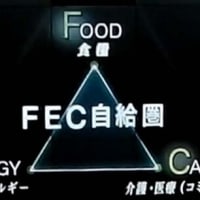

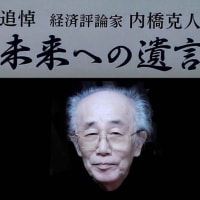

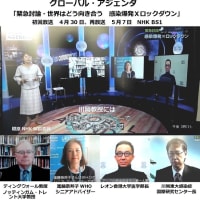
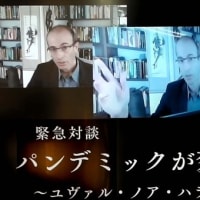
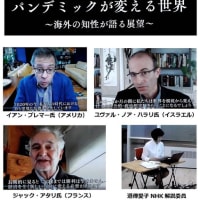


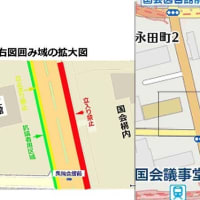






※コメント投稿者のブログIDはブログ作成者のみに通知されます